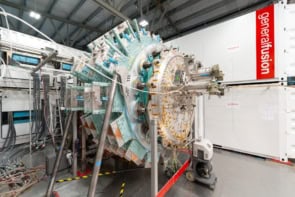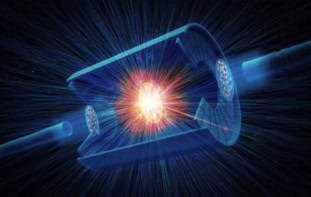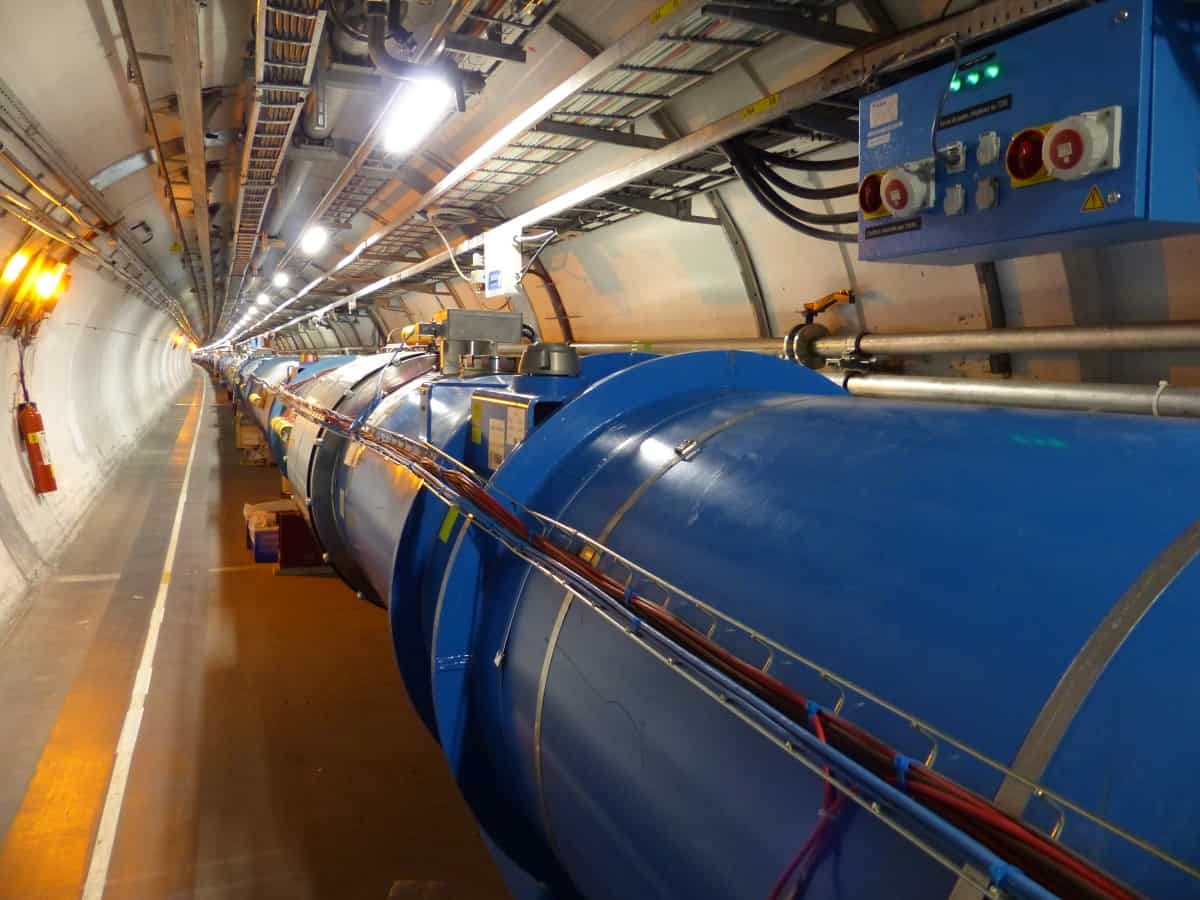
When Physics World was invited by the UK’s Science and Technology Facilities Council (STFC) to visit CERN and meet a bunch of physicists working on the world’s biggest physics experiment, it’s hard to think of a good reason to say “no”.
And so last week I flew to Geneva to join a group of other UK science journalists on a two-day tour of CERN, having a nosey round the LHC and two of its experiments – LHCb and the Compact Muon Solenoid (CMS) – and learning about CERN’s plans for the future.
Descending 100 m underground in an industrial lift, first stop was the LHC itself, which is normally out of bounds but is currently in the midst of a two-year shutdown as CERN begins work on an upgrade to the LHC called the High-Luminosity LHC (HL-LHC).

There to greet us was Paul Collier, CERN’s marvellously titled “head of beams” (who I have just realized is one “D” short of the best-ever example of nominative determinism – Collier/Collider). He explained how the LHC is tilted at angle of 1.4° to the horizontal to keep the accelerator level with respect to the surface overground.
Collier was there on the fateful day in 2008 when, just after the LHC fired up, two superconducting contacts in one of the LHC’s magnets separated, creating an arc of current that damaged the machine and led to a massive repair programme that took almost a year to complete.
Of course, the LHC isn’t there just to accelerate protons, the idea is to collide them too. And so it was back overground to the control room of the LHCb experiment, where it was reassuring to see an emergency panel with a big, red “stop” button.

Much of the focus at CERN has been the two “general-purpose” experiments — ATLAS and the Compact Muon Solenoid (CMS), which together found the Higgs boson in 2012. But one could argue that there’s been more interesting work from the LHCb, which has only this year reported further evidence for pentaquarks and for symmetry violation in charm mesons for the first time – a finding that could help explain why there’s so much more matter than antimatter in the universe. Giving us the lowdown on the LHCb was Silvia Gambetta (University of Edinburgh), Mark Williams and Chris Parkes (both University of Manchester).


As I stared at the wiring on the LHCb, it’s mind-boggling how any of it actually works. One stray cable and surely the whole thing will conk out?

Most of the current shutdown is focused on preparatory civil-engineering works for the HL-LHC, but CERN staff are using the two-year break to carry out vital maintenance on the accelerator and experiments before the LHC switches back in 2021 for a final three-year run. After all, when the LHC’s in use, it’s on for two or three years at a time – and you can’t nip down and carry out running repairs. Or as physicist Dave Barney from CMS put it: “It’s like having an experiment on the Moon – you can’t modify it when you want.”

Barney is responsible for validating prototype modules for a new calorimeter for the “end-caps” on the CMS experiment. The current calorimeter has several parts, including one that contains 80,000 lead-tungstate crystals, which are super-dense and therefore great at measuring the energy of particles that fly off from collisions. Trouble is, they go dark and won’t stand the rigours of the HL-LHC.
This is especially true of the endcaps, where the 14,000 crystals will have to be replaced with something else. Barney and colleagues are therefore developing a new “high-granularity” calorimeter that will include about 30,000 honeycomb-shaped silicon modules, each divided into about 200 smaller hexagons – a total of about six million detectors!
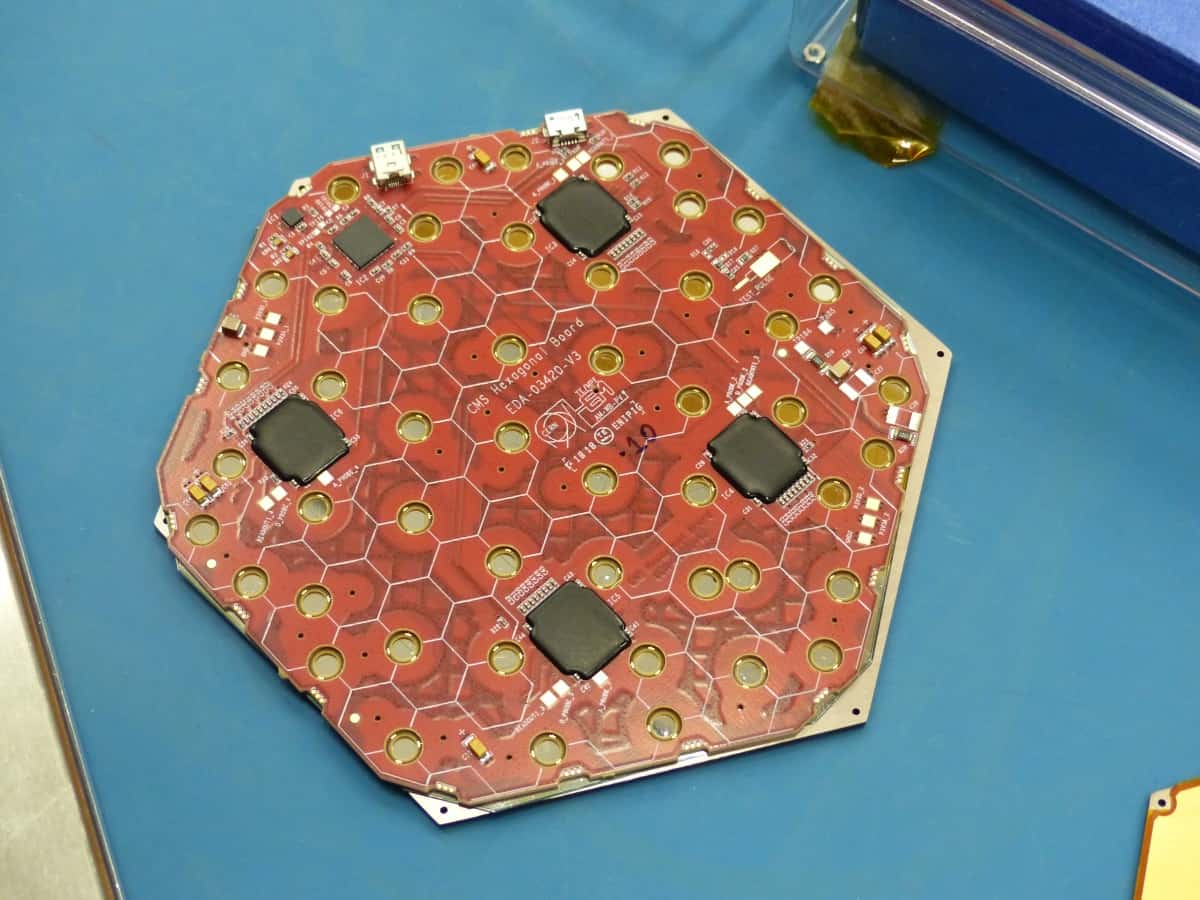
Barney was talking to us about the end-caps as if they’re part of just another physics experiment. Which I suppose they are – that is, until you go 100 m back underground to see CMS and you realize just how big it is and why “compact” is the strangest choice of word for the CMS. The end-caps are the big lumpy object to the right of the scaffolding.
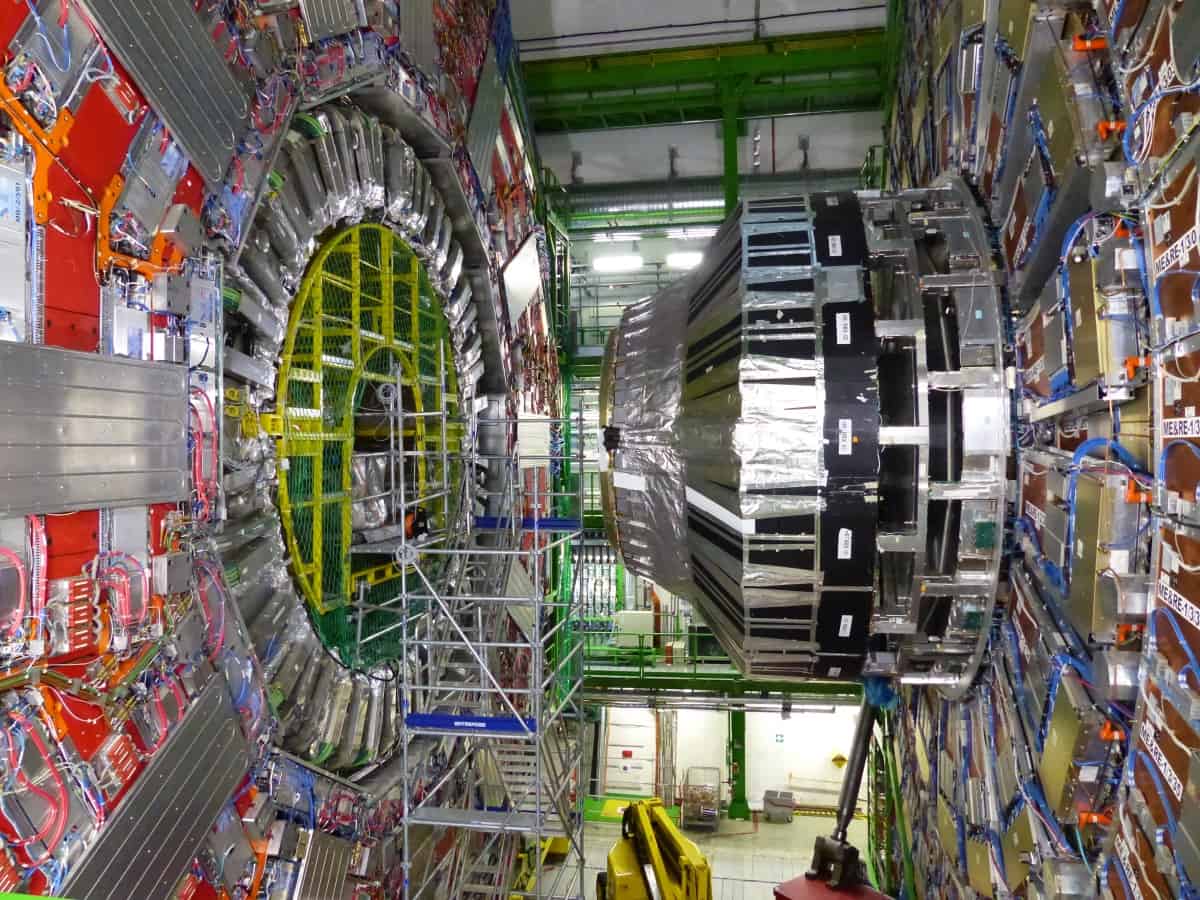
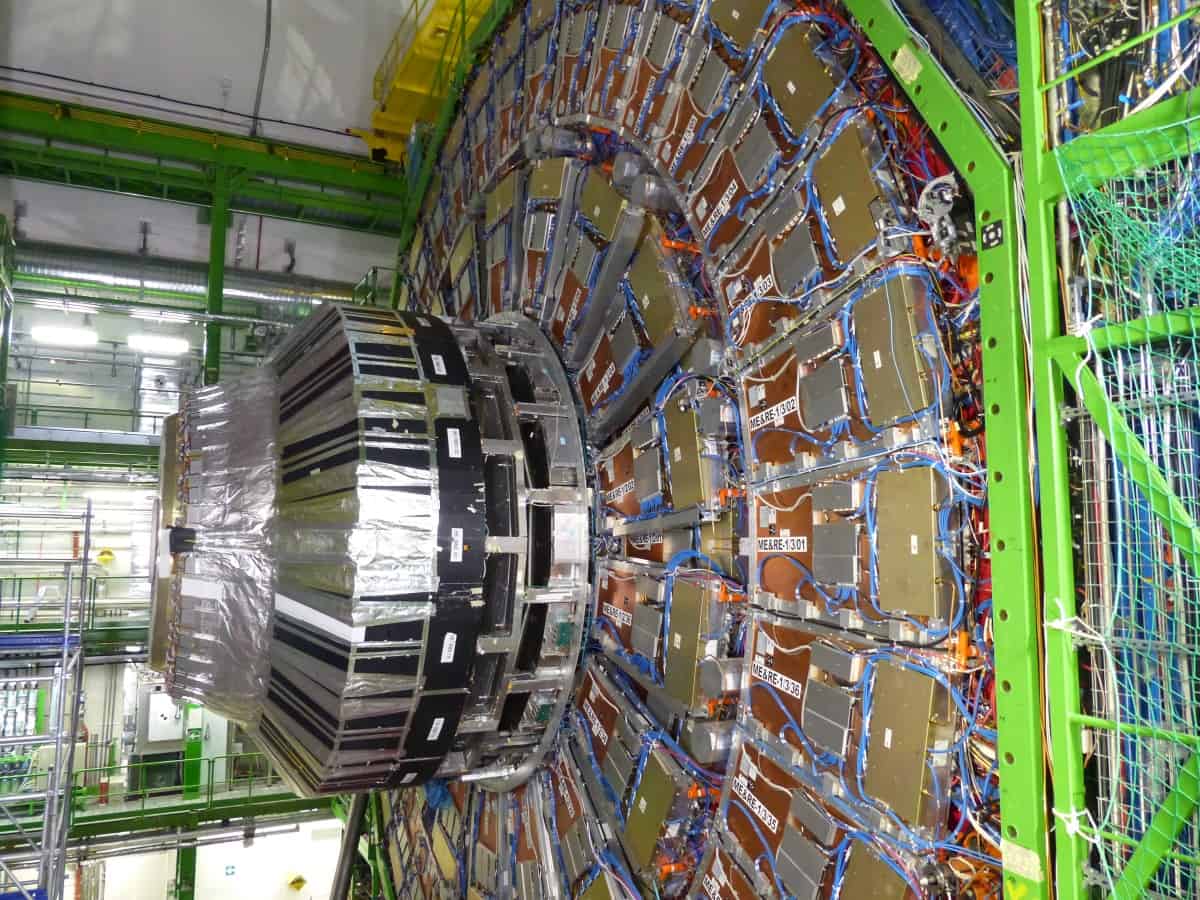
For all the talk of HL-LHC, or “High-Lumi” as I often heard it called for short, there are already plans for the next collider after the LHC. Depending on who you talk to, CERN will, over the next 12 months, fall in line either behind the Compact Linear Collider (CLIC) or the 100 km Future Circular Collider (FCC).
The FCC, if built, would be about as long as the giant £15bn Crossrail railway tunnel across central London. Except that it would contain an accelerator with thousands of magnets, using technology that’s been pushed to the limits, searching for physics we don’t yet know anything about, and involving thousands of scientists and engineers from across the globe – many of whom have perhaps not yet even been born. If it happens, the FCC will, like CERN itself, be an incredible human feat.
• You can find out more from my visit by listening to this Physics World Weekly podcast, which features Rhodri Jones (head of beam instrumentation), Chris Parkes (LHCb), Ben Krikler (CMS) and Sarah Williams (ATLAS).


